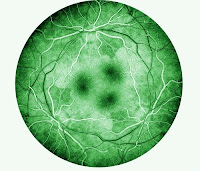The Egyptians pictured their civilisation on papyrus rolls and sculptured reliefs and produced the world's first surgical textbook around the time of Tutankhamen-1700BC.It describes in detail 48 cases of battle wounds and their treatments.
the Greek artists,like the Egyptians used everyday themes in their decorative arts and most aspects of their culture and medicine can be found in painting on their black figure pottery.dating from 400BC
After the fall of Roman Empire civilisation slipped into the Dark Ages. Christaniaty emphasis on the soul and not the body,medical investigation virtually stopped.
Until the 14th century medicine was taught exclusively on the text of Galen who had died 1100 years before. because his work was approved by church.
Universities were growing fast in the 14th and 15th century.Leonardo de vinci's approach to anatomy was the beginning of modern scientific method,with controlled investigation,detailed recording and accurate illustration of finding.( more explanation in one of my earlier post)
Illustration has been an important feature of medical documentation since the time of Vesalius and thus has a long history. However, the first application of photography to medicine appears in 1840, when Alfred Donné of Paris photographed sections of bones, teeth, and red blood cells using an instrument called the microscope-daguerreotype. Conventional medical photography apparently began in France when J. G. F. Baillarger photographed cretins (1851), which was followed by a Dr. Behrendt of Berlin photographing his orthopedic cases in 1852, and in the same year by Dr. Hugh Welch Diamond photographing mental patients at the Surrey County Asylum in England.
When E. J. Muybridge synthesized motion studies (chronophotog-raphy) of humans and animals (1877–1893) a new area in medical photography occurred, which greatly stimulated other investigators in medical photography, and the French physician Étienne-Jules Marey endeavored to analyze human and animal motion by serial photographic studies (1882) and devised a chronophotographic apparatus and projector (1890), which was the forerunner of the modern motion-picture camera. By the turn of the century, applications were too numerous to mention, but in 1927 R. P. Loveland made a medical teaching film using cinephot-omicrography, demonstrating the life history of the yellow fever mosquito, and in 1929 F. Neumann in Germany made a time-lapse film of living bacteria.
The first medical publications illustrated with photographs were Album de Photographies Pathologiques and Mecanisme de la Physiologie Humaine (1862) by G. B. Duchenne, the founder of electrotherapy. The Photographic Review of Medicine and Surgery (1870), by F. F. Muary and L.A. Duhring, was the first medical journal illustrated with photographs. Albert Londe in 1888 published a book, La Photographie Moderne , containing information on medical photography and also the first book specifically devoted to medical photography, La Photographie Medicale in 1893.
Journal of Audiovisual media in medicine 1986,9,44-49 printed in Great Britain
http://encyclopedia.jrank.org/articles/pages/1156/Medical-Photography.html















